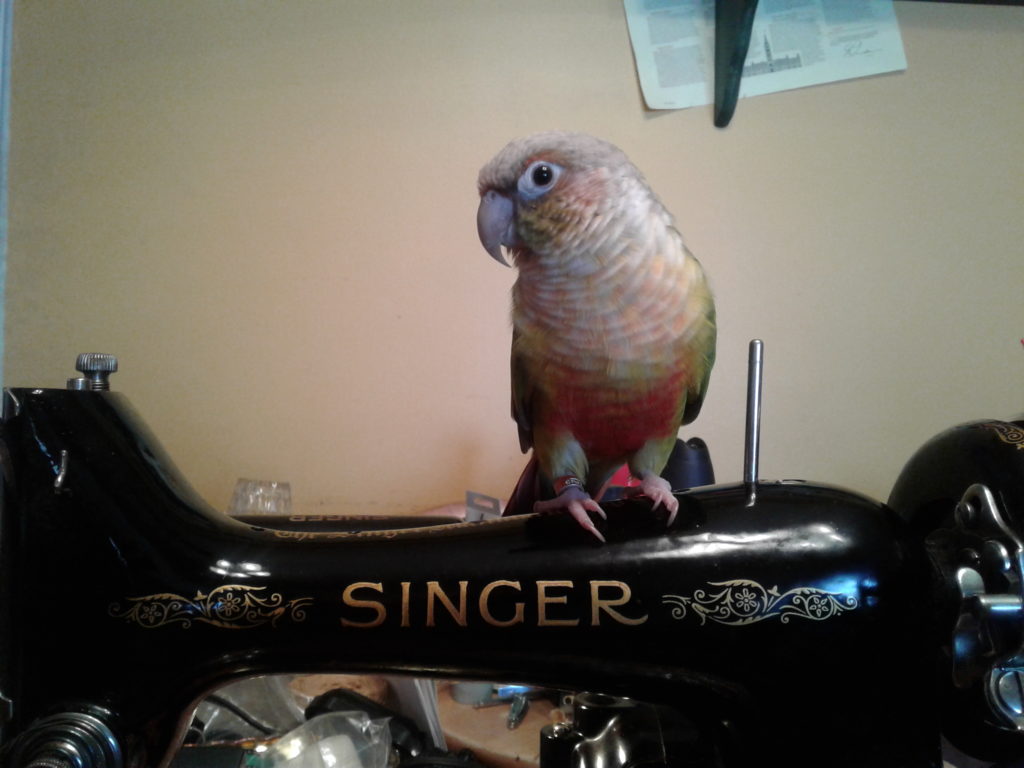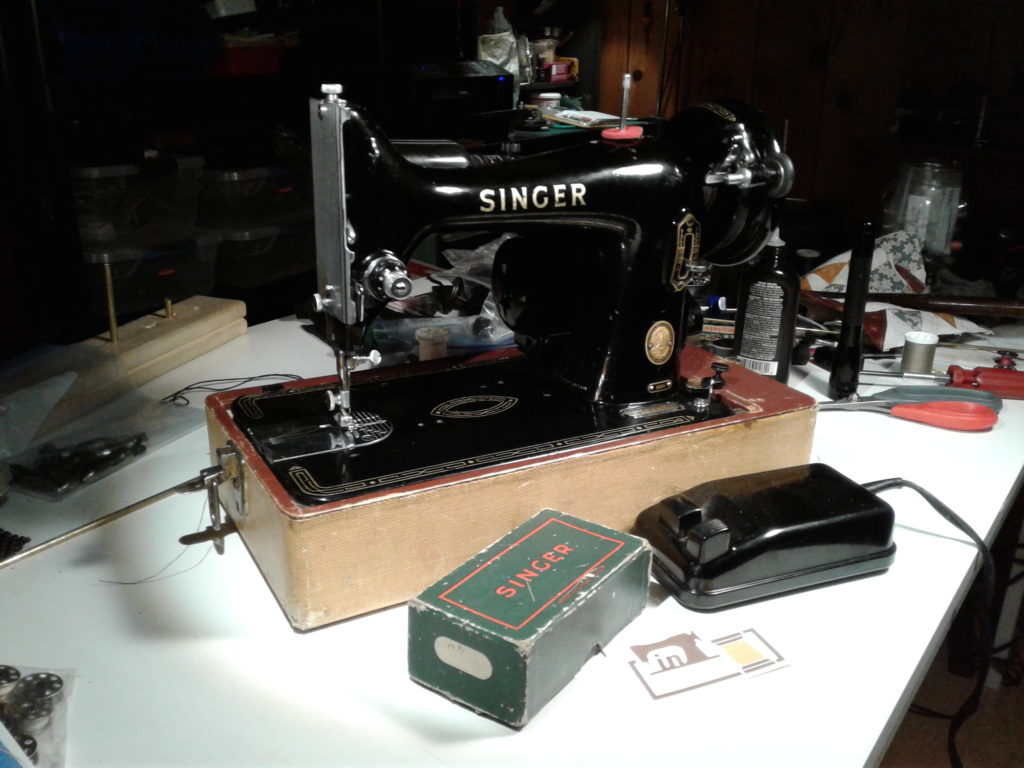

People often get confused when they see a Singer 99, and will mistake it for a 221…
The Singer 99 was released in 1911 as the 3/4 version of the Singer Model 66, sharing the same oscillating hook, drop in class 66 bobbin, and exemplary stitch quality of it’s big sister. It was a fairly compact (3/4 sized) machine for it’s day and even came in an Aluminium version (which is quite rare).
The Singer 221 “Featherweight” debuted in 1933 and has become an extremely popular collectible and sewing machine, especially among quilters… some models can fetch many thousands of dollars if they are early, or have special badges. Like the 99 it is a straight stitch machine but uses a vertical rotary hook, it too lays down a perfect stitch and uses the same feet and attachments.
So which one is better ?
The stitch quality of each machine is exemplary, both run smoothly and quietly so there is no “better” to be found there. You would not be able to tell the difference in a stitch sample.
The 99 has an edge in the power department (especially in later models), has more harp space, and I would also say the class 66 hook is less prone to fouling.
The 221k’s greatest edge is that it is lightweight, being cast Aluminium instead of cast iron and if you have to carry your machine around in a case the difference is about ten pounds. The rotary hook might also give it a little edge in the free motion department, but the harp space is small and you probably won’t be finishing quilts on one.
My advice to folks who come in the shop is that, if you do not have a need for a lightweight portable (like a 221) then it is well worth looking at a Singer 99 as they are an amazing machine, and one of Singers most popular models of all time. While they cost $10.00 less than a Featherweight back in the day, it was still a very expensive machine.
The later versions of the 99 also had back tack and reverse.

